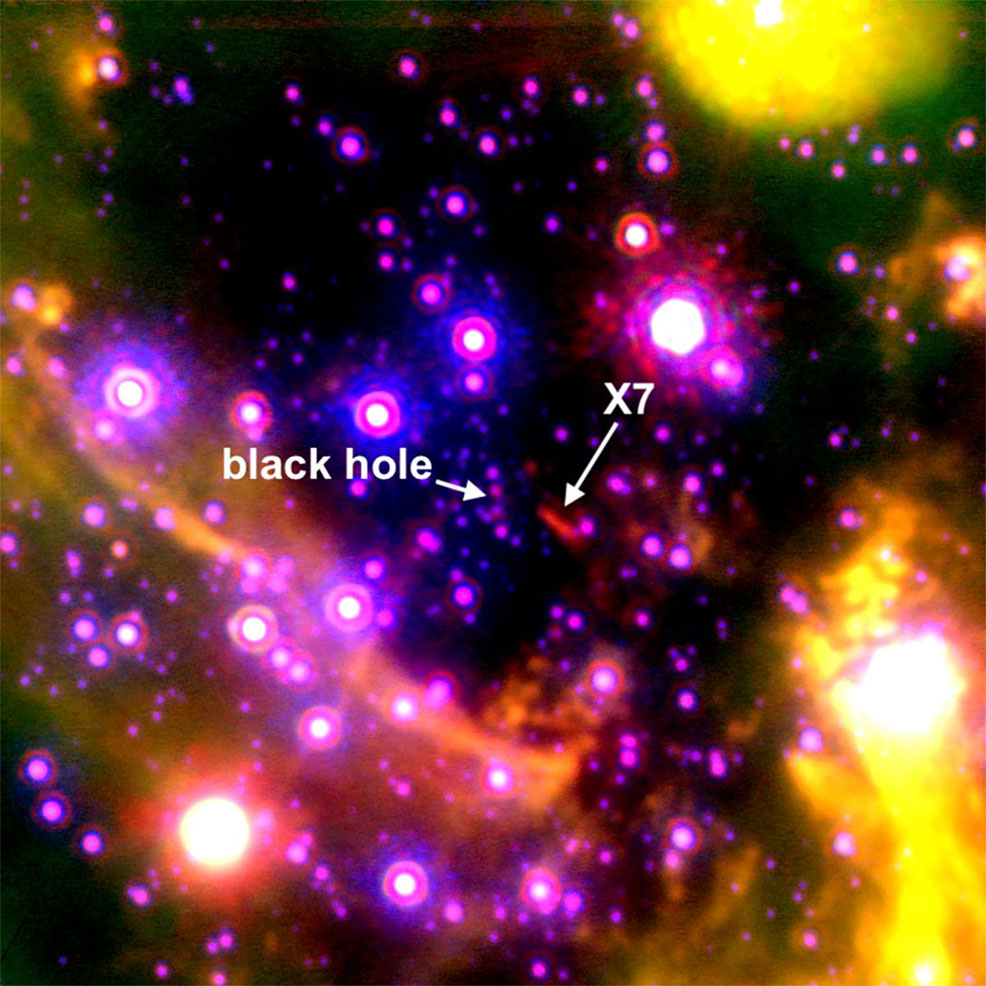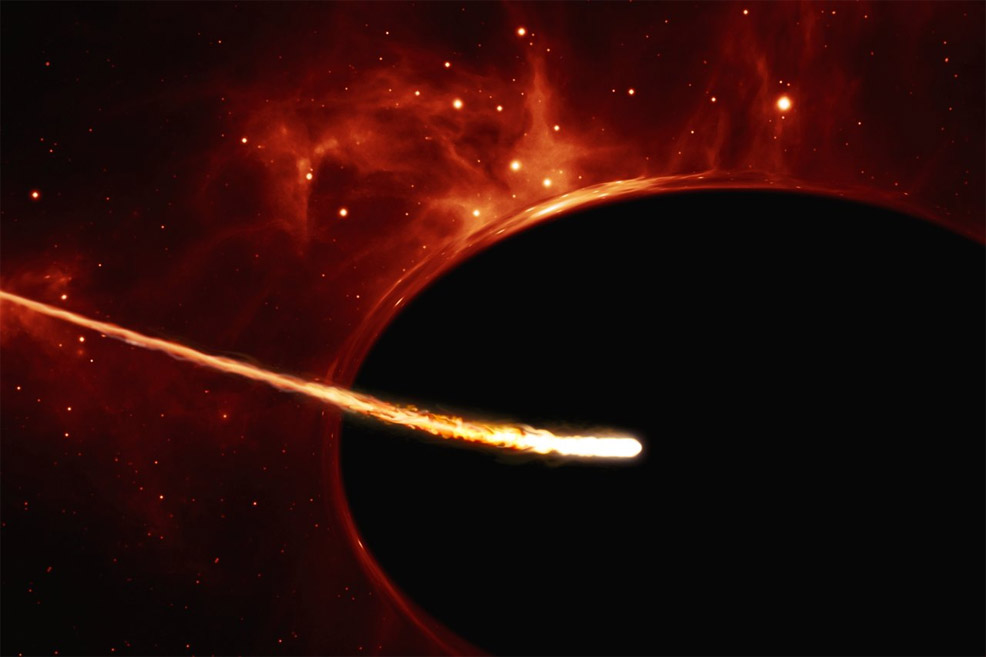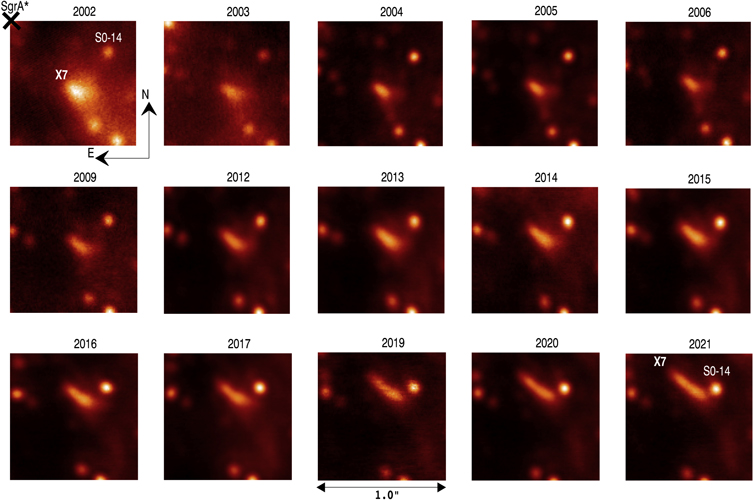
5th March 2023 Supermassive black hole in Milky Way centre will consume large object in 2036 A mysterious object called X7 has evolved dramatically in a relatively short time as it approaches the centre of our galaxy. Astronomers now say it is likely to be a large cloud of dust and gas, created when two stars collided.
For two decades, scientists have observed an elongated object named X7 near Sagittarius A*, the supermassive black hole at our galaxy's core. Its nature and origin have been a source of great intrigue. Was it pulled off a larger structure nearby? Was its unusual form the result of stellar winds, or was it shaped by jets of particles from the black hole? X7 has prompted these and other questions. Now, having examined the evolution of X7 using 20 years of data, astronomers from the University of California, Los Angeles (UCLA) Galactic Center Group and the Keck Observatory propose that it could be a cloud of dust and gas, ejected during the collision of two stars. Over time, they report, X7 has stretched, and is being pulled apart as the black hole drags it closer, exerting its tidal force upon the cloud. They predict that within the next few decades, X7 will disintegrate and eventually be drawn into Sagittarius A*. This may later cause some "fireworks", the team say, as it heats up and spirals into the black hole.
"No other object in this region has shown such an extreme evolution," said Anna Ciurlo, UCLA researcher and lead author of a study in The Astrophysical Journal. "It started off comet-shaped, and people thought that maybe it got that shape from stellar winds or jets of particles from the black hole. But as we followed it for 20 years we saw it becoming more elongated. Something must have put this cloud on its particular path with its particular orientation." The gas and dust cloud making up X7 has a total mass equivalent to about 50 Earths, or 16% that of Jupiter. Its orbital path around Sagittarius A* had been expected to take 170 years to complete. Based on its current shape and trajectory, however, the team now estimates that X7 will make its closest approach in the year 2036, and then likely spiral into the black hole and disappear. "We anticipate the strong tidal forces exerted by the galactic black hole will ultimately tear X7 apart before it completes even one orbit," said Mark Morris, Professor of Physics and Astronomy at UCLA and paper co-author.
"This is a unique chance at observing the effects of the black hole's tidal forces at high resolution, giving us insight into the physics of the galactic centre's extreme environment," added Ciurlo. The stretched-out gas and dust filament is now moving very rapidly, at up to 490 miles per second, or nearly 1.8 million miles per hour. Because of the extremely large mass of the black hole (about 4.2 million times that of our Sun), everything in its vicinity moves much faster than we typically see anywhere else in the Milky Way. This includes several stars with highly eccentric orbits, slingshotting around at nearly 8% of light speed in one case. Using the Keck Observatory, the researchers will continue to monitor the dramatic changes of X7, as the black hole's gravity yanks it apart. But of course, due to the immense distances and finite speed of light, what they are "seeing" actually happened 26,673 years ago – near the peak of Earth's last ice age.
Comments »
If you enjoyed this article, please consider sharing it:
|









